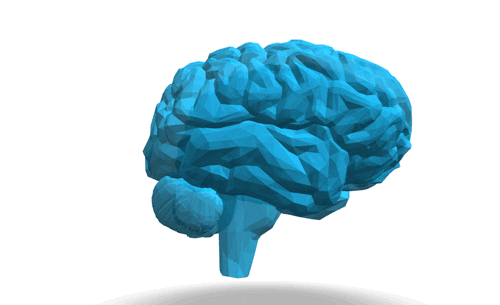I Practice Neuropuncture
I highly doubt you have encountered the term Neuropuncture before, mostly because it is a new term to distinguish between acupuncture specialties. I challenge you to look at any acupuncturists' websites or to Google the definition of acupuncture and surely you'll find an explanation of "Qi and Meridians," or that magical energy flows throughout your body and how you need your channels balanced. This is notably different from Neuropuncture and the type of acupuncture I practice.
Neuropuncture is simply the insertion of small needles near certain nerves to produce a chemical change in the brain and surrounding tissues. No magic about it. Neuropuncture combines the principles of neuroscience, western medical biology, chemistry and current evidence-based clinical research and applies it with the tool of a needle. This is a specialized style of acupuncture that very few practitioners utilize. I'm a firm believer in mixing the best of eastern and western medicine—the old and the new.
Inserting needles near specific nerves and muscle motor points, where the muscle has the most nerve activity, is best applied to pain syndromes and injuries. Inserting needles into tender areas of a muscle or a muscle motor point is nearly the therapy of dry needling. Any practitioner who is not a licensed acupuncturist (L.Ac.), like a physical therapist who practices dry needling, is not legally allowed to insert needles into points away from pain called distal points. These distal points are the bread and butter of Neuropunture and they are found near the arms, legs, and spine and they target a branch of major nerves.
The major nerves we assess and aim at targeting include, but are not limited to, the orbital nerve for facial pain or headaches; the occipital nerve for neck pain and headaches; the spinal accessory nerve for back and shoulder pain; the radial, ulnar and median nerves for arm pain, shoulder pain and dysfunction in the vagus such as nausea. On the lower body we can affect the sciatic nerve, tibial, peroneal, saphenous, and popliteal nerves, to name just a few, for low body pain. Lastly, there are points along the spinal column that help with pain in a broad area. They help increase blood circulation and enhance targeted organ function.
Neuropuncture, along with my specialty in advanced needle insertion techniques, aims to make specific changes in the brain. With these advanced techniques, we can actually choose which area of the brain we wish to stimulate. When stimulated, the brain will release certain chemicals required for a patient to recover.
In Neuropuncture, we also have an intent of specific intensity of stimulation. We can increase the signal to the brain and our target-ed nerves a few ways. One way is to use needles that are bigger. The second is to add in more needles closer to the targeted nerves. The third would be to manipulate or twist the needle until the patient feels a dull ache. The final way to increase stimulation is to use an electrical stimulation device commonly known as a TENs or e-stim connected to the needles. I know what you're thinking. Your worst nightmare is to pay someone to stick a bunch of needles into you, and if that doesn't work, she'll use bigger needles and electrify them!
I know it sounds scary! But in all honesty, most patients cannot discern between the smallest 40 gauge and the bigger 32 gauge needles. Furthermore, the e-stim actually feels like a massage! It feels like gentle, rhythmic tapping—not electrocution! In fact, the e-stim machine was first thought of and invented when scientists discovered that oxytocin was stimulated in breastfeeding mothers when her child would rhythmically suckle milk. Oxytocin is a powerful hormone that helps promote the feeling of bonding and love,along with other functions. Scientists took this idea and tested it on other nerves. They found that with the right amount and frequency of electricity (about one millionth to one thousandth of the power to light a light bulb) we could send just the right message to the brain to stimulate exactly which chemicals we want! Brilliant!
Chinese medicine and acupuncture has deep roots in esotericism and mysticism. However, as science and research evolves, we can no longer see the medicine for what it used to be in the Shang dynasty around 1700 B.C. Just like morphine and alcohol was given to teething children in the 1930s to ease their pain, we now know the true nature of these compounds and can never return to our previous naive view of the therapy. I've found through rigorous research of both Traditional Chinese Medicine and neuro biology that actually what Huangdi (author of many acupuncture and Chinese medicine books from about 400 B.C.) was actually describing in his texts was very close to what we know today in modern medicine. The language Huangdi uses is romantic and fantastical but actually is not terribly incorrect. If we can re-translate these old transcripts, such as other neuropuncturists and myself have, I believe we can apply the use of acupuncture in more amazing ways than ever imagined!
When you subscribe to the blog, we will send you an e-mail when there are new updates on the site so you wouldn't miss them.


Comments